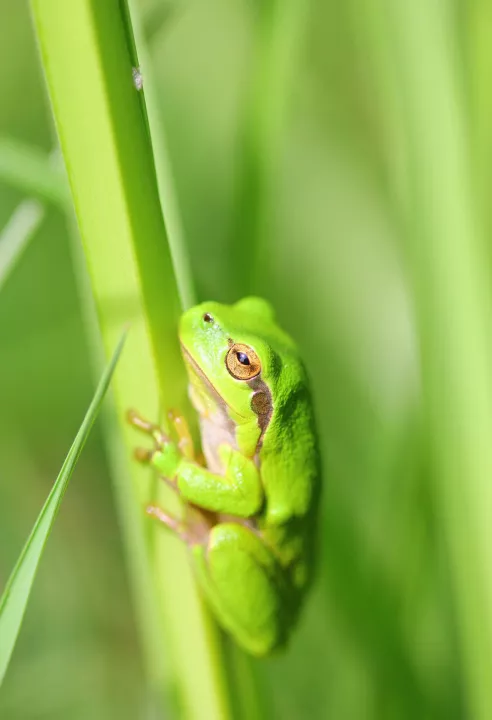Heesbossen, Vallei van Marke en Merkske

The Vallei van de Marke is located in the Noorderkempen, close to the Dutch border. The area is located in the north of the province of Antwerp and consists of five sub-areas spread across the municipalities of Hoogstraten, Rijkevorsel and Merksplas. Four of the five sub-areas are connected via the Mark river and the Heerlese and Strijbeekse Loop.
The area is characterized by dry deciduous forests, heathland with fens and transitional peat and valley nature. The Strijbeekse Loop and the part of the Mark before its confluence with the Merkske still follow their original, winding course. In the valley you will find several small swamp forests, poplar groves and grasslands.
We certainly emphasize the 'Het Merkske' area here. Het Merkske guarantees pure enjoyment. The border stream flows through a stream valley full of life. This region was a forgotten corner for a long time, so it escaped human intervention. You can relax in a small-scale landscape where silence dominates and where there is no room for asphalt and concrete. Children come on an adventure and experience first-hand why they had to wear those boots. Rare plants make this area a treat for every nature lover. In the Merkske valley we even find traces that go back to the Stone Age.
The Merkske forms the natural border between the Netherlands and Belgium and between the Noorderkempen and North Brabant. Wooded banks and bramble banks, flower-rich grasslands, ponds, heather-bare grasslands and lots of black alders, which love to stand with their feet in the water, adorn the landscape. The Agency for Nature and Forests, Natuurpunt and Staatsbosbeheer, guarantee more than 1,900 hectares of special nature and landscape.
Because the area has escaped the upscaling and straightening of rivers, nature has been able to quietly preserve a rich fauna and flora and the landscape is unique. The marshy meadows and forests on either side of the stream are home to rare plant species such as thistle, slender primrose and saxifrage.
The alpine newt, small newt and great crested newt are just a few species that occur there. The tree frog and the garlic toad are doing well after restoration of the landscape and reintroduction. The stream valley offers sufficient food and protection for numerous birds such as oriole, bluethroat, yellowhammer, woodcock and nightingale. Large egrets, spoonbills, black-tailed godwits and curlews roam in and around the fens and pools. If you look closely, you will discover traces of a deer or predators such as fox, ermine, polecat or weasel.
Click here to find out more about this area!
